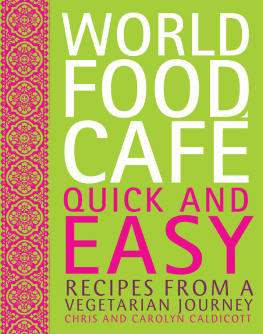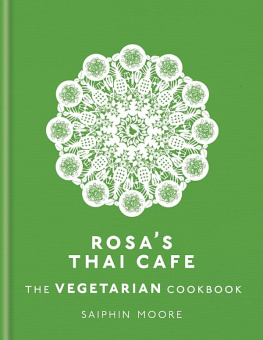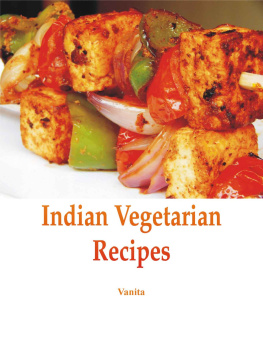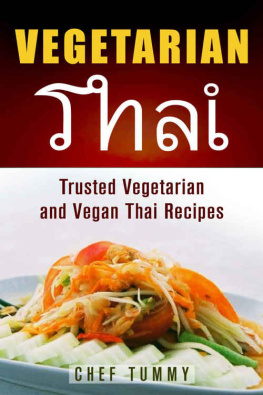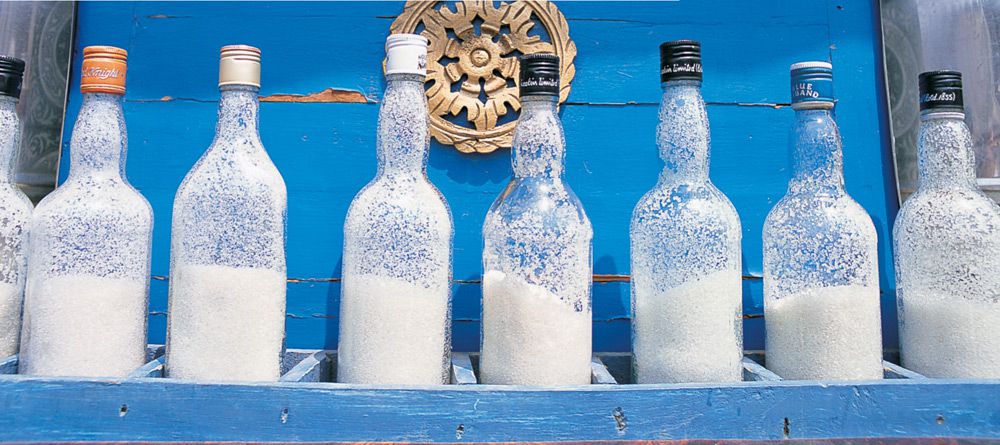INTRODUCTION
The freshly washed front doorstep of a house in Orissa in eastern India
Ten years of travelling the world in search of images and stories as a freelance photojournalist and as the Expedition Photographer-in-Residence at Londons Royal Geographical Society have given me a wealth of memorable experiences. Not the least of these have involved the diverse and delicious meals I have been privileged to eat in generous peoples homes and remote expedition camps, at simple street stalls and fashionable restaurants, and in dozens of countries. I started to collect recipes whenever possible, in the hope of being able to reproduce the best at home.
In 1989 I met Carolyn, already an accomplished cook, who similarly found discovering and eating exotic foods one of the greatest pleasures of travel. We began travelling together, visiting Africa, the Middle East, the Indian subcontinent, Southeast Asia, and Central and South America, accumulating ideas for globally inspired recipes with the aim of one day opening a restaurant in which we could serve all our favourite dishes from around the world. Some of the recipes we gathered from people we met along the way who were kind enough to invite us into their homes to eat or stay with them, others are traditional dishes of specific regions. Some have been worked out by observing the skills of speedy chefs in busy pavement cafs on crowded city streets, still others patiently demonstrated by local people in jungles and deserts and on mountains some of the worlds remote places, where with so few distractions, food, especially the evening meal, is a very necessary pleasure.
As both Carolyn and I travelled as vegetarians we were used to the challenge of finding good things to eat in places where the traditional cuisine lends itself more naturally to meat or seafood. Although this is rarely a serious problem, there have been times when we felt we were missing out on some exciting dishes simply because they were never made meatless. In such cases we adapted the traditional recipe, replacing the meat or fish with suitable alternatives to produce vegetarian versions just as tasty, with all the flavours and tastes so evocative of distant lands.
In 1991 we opened the World Food Caf in London. The opportunity came when our friend and co-founder Nicholas Sanders offered us a 56 square metre (600 sq ft) room on the first floor of a building he was restoring in Neals Yard in Covent Garden. The building had previously been used as an animation studio by the Monty Python comedy team before being burnt to the ground in an accidental fire. Nicholas was in the process of rebuilding it in its original exterior style, and filling it with new businesses. Our space had no plumbing, electricity or gas not even a floor: just four walls and three wonderful huge windows opening out on to the tree-filled peace of Neals Yard. We wanted the caf to retain this bright, open character, to provide an appealing place where we could serve meals made up from a variety of dishes from the countries we had visited. The caf was also a perfect venue to exhibit photographs taken on each trip, and to play compilations of music originating from as many countries as the food.
The idea of cooking in faraway places food that is just like the food people eat at home, and flying ingredients thousands of miles to achieve it, might seem to rob travel of one of its greatest pleasures, the excitement of discovering new cuisines; there is something strange about eating a meal of Italian pasta in the Maldives, or a Thai curry in the Caribbean. Yet most of us enjoy eating such dishes in our own cities without a second thought.
For centuries, all over the world local cuisines have been constantly changing. Only 500 years ago Europeans had never tasted tomatoes, potatoes, peppers, avocados or chocolate, no one in Asia had ever spiced their food with chilli, no African had grown a field of maize and not a single dish in the Americas had been garnished with coriander or spiced with pepper. So growing rocket in northern Kenya, organic lemon grass in Belize or vines in India is really just an inevitable consequence of ingredients and tastes migrating. Tourism may be the initial impetus that creates a demand for previously unavailable commodities, but in time, some of these will become part of the diet of local people.
Food shop in India
ABOUT THE RECIPES
The recipes in this book can all be easily cooked at home with the right ingredients; where these might be difficult to find we have suggested alternatives. Some of the dishes were those we served every day in the World Food Caf; others made only occasional appearances there. In the caf the food was usually cooked without dairy products; cheeses, yoghurts and creams were offered as optional garnishes. Meat and fish were never used. In this book we have indicated some of the recipes that would traditionally use fish or seafood.
Spices both aromatic and hot are a common ingredient of food from the countries represented in this book. In certain extreme cases we have eaten dishes that were distinctive for an ability to induce almost hallucinogenic states of delirium, as cocktails of pounded chillies, garlic and ginger released their power and left mouths on fire, brows moist and heads reeling. Any pleasure derived from this level of spicing is a very personal one, not universally shared. We have tried to achieve moderation in the use of chillies, and quantities may be reduced or increased according to taste. A number of dishes contain lots of spices other than chillies: these combine in specific amounts to form complex and unique flavours and therefore should not be altered as freely as the chilli quantities. Some of the food in this book is a little more spiced than we would have normally pitched it for consumption in the caf, reflecting our own passion for more authentic levels of spicing.


